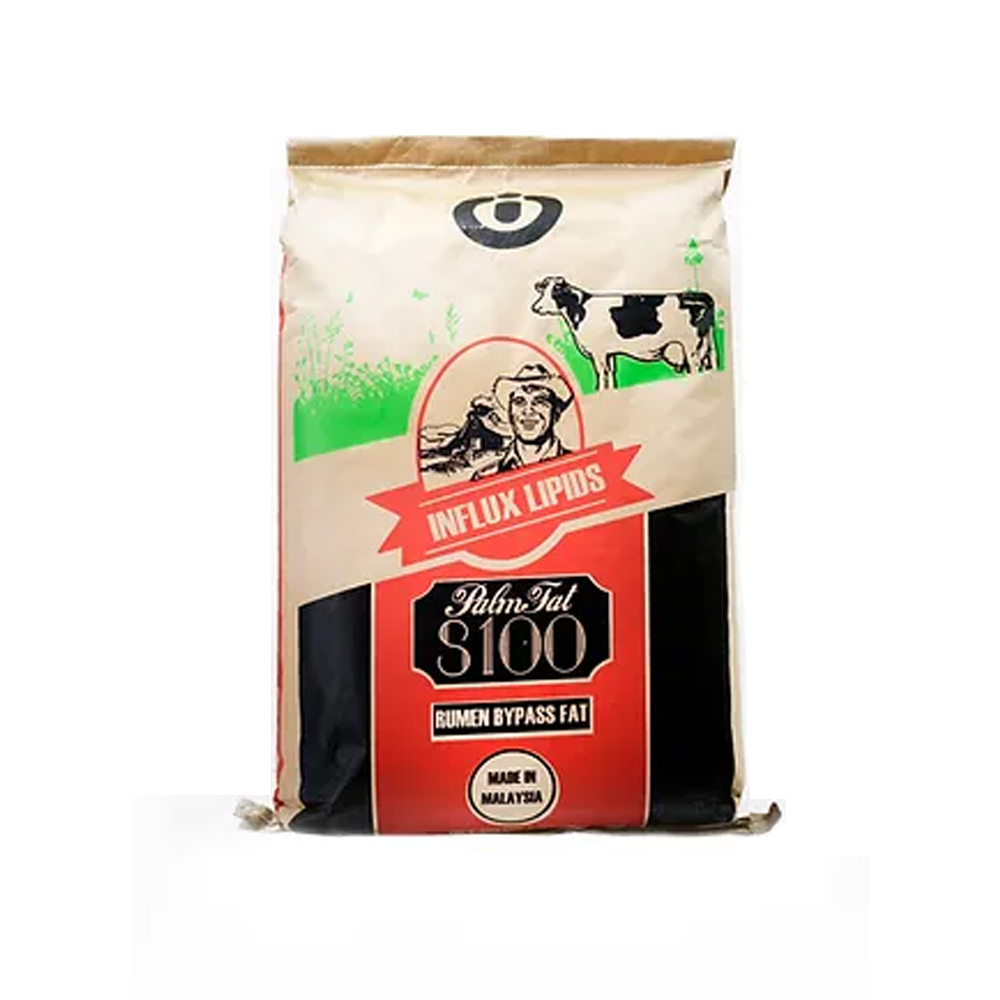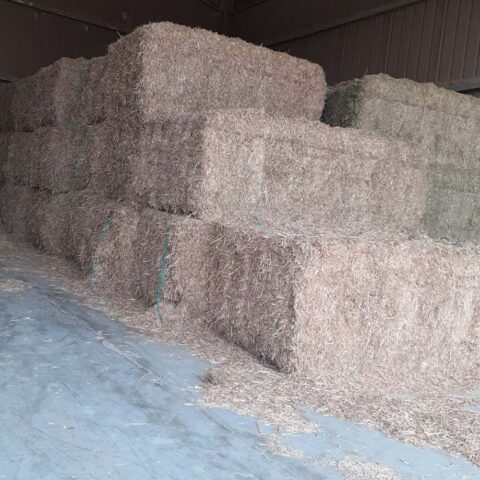Description
How can this problem be solved?
This is where our product, PalmFat S100 (rumin bypass fat), can help solve this problem and provide valuable payback, so it is important to understand rumen bypass fats in the dairy cattle diet.
What is Rumen Fat Bypass?
Rumen bypass fats are essentially dry fats or “protected” fats that are processed for easy handling and mixing into all feeds.
Why Rumen Bypass Fat?
Belly bypass fats have a high fat content and thus can overcome the problem of increasing the energy intake of cows without exceeding the recommended feeding level.
Simply put, fat is the most energy-dense food component available – producing the most energy per gram (37.7 kj/g compared to carbohydrates at 16.7 kj/g).
This leads to the need for a relatively smaller amount of feed in order to achieve the required energy intake of cows to maintain calving and lactation, without exceeding a cow’s nutritional limit.
The consequence of this is increased efficiency of milk production, and overall, much healthier cows during the whole process.
Abdominal bypass fat vs. other fats
The problem with other forms of fat is that they can only be used from the rumen (second stomach of the cow) in small amounts when fed in “free” or “unprotected” form.
Even relatively modest amounts will coat the fiber in the rumen sufficiently to prevent access by the microbes necessary to break down the fiber.
The result is suboptimal rumen fermentation, reduced energy supply, and a decrease in butterfat percentage.
Hence the need for rumen bypass fats (also called rumen protected fats) that pass through the rumen without affecting fermentation but can still be digested in the cow’s gut.
Other benefits of bypassing belly fat
Their fatty acids are so saturated that they pass through the abdomen without causing any negative effects.
Therefore, fats remain stable even when the pH value is low.
As a rule, the cow does not need to get used to it at first compared to saponified fats where acceptance is lower and there is a risk of udder swelling.
Why pick PalmFat S100?
At InfluxLipids, our very own PalmFat S100 is derived from palm fatty acids solely by fractionation.
PalmFat S100 has a very high fat content of (min.) 99%.
PalmFat S100 is not saponified and hence all the energy content of the fats are fully utilised.
PalmFat S100 also contains a high percentage of palmitic acid and there is no trace of trans-fatty acids. Palmitic acid has been scientifically proven to increase milk fat percentage and yields of milk.
PalmFat S100 is available in either powder form or granulated form.
PalmFat S100 can be easily included in industrially produced performance feed for dairy cattle as it is readily palletized.
In general, our PalmFat S100 can be fed to cows directly in the TMR, in the farm’s very own feed mix.
To achieve the best possible consistency in quality, it is vital to use only one starting substance. Therefore as a manufacturer, our company – InfluxLipids is based in Malaysia and this ensures that we are in a great position to source for the raw materials for PalmFat due to Malaysia being one of the largest palm oil producing country.
Specifications
Description
Bypass fat powers for ruminants made from fractionated palm fat without trans fatty acid, rich in C-16 (palmitic acid).
Typical Analysis (%)
Min 99
Fat (%)
Fat (%)
Min 99
Melting Point (°C)
Min 55
IV Value (mg/100mg)
Max 21
Moisture (%)
Max 1.0
NEL 6.35 Mcal/kg (Calculated)
Dosage In Feeds
The optimum dosage of PalmFat S100 is dependent upon species, dietary energy concentration, lactation stage and milk yield of dairy cows:

Packing
The optimum dosage of PalmFat S100 is dependent upon species, dietary energy concentration, lactation stage and milk yield of dairy cows:
25 kg paper bag with PP-Woven inlay
625kg jumbo bag
Storage
Store in a cool and dry place, in original unopened bags, without direct exposure to sunlight
Soft lumping may happen if it is stacked too high with many bags.





